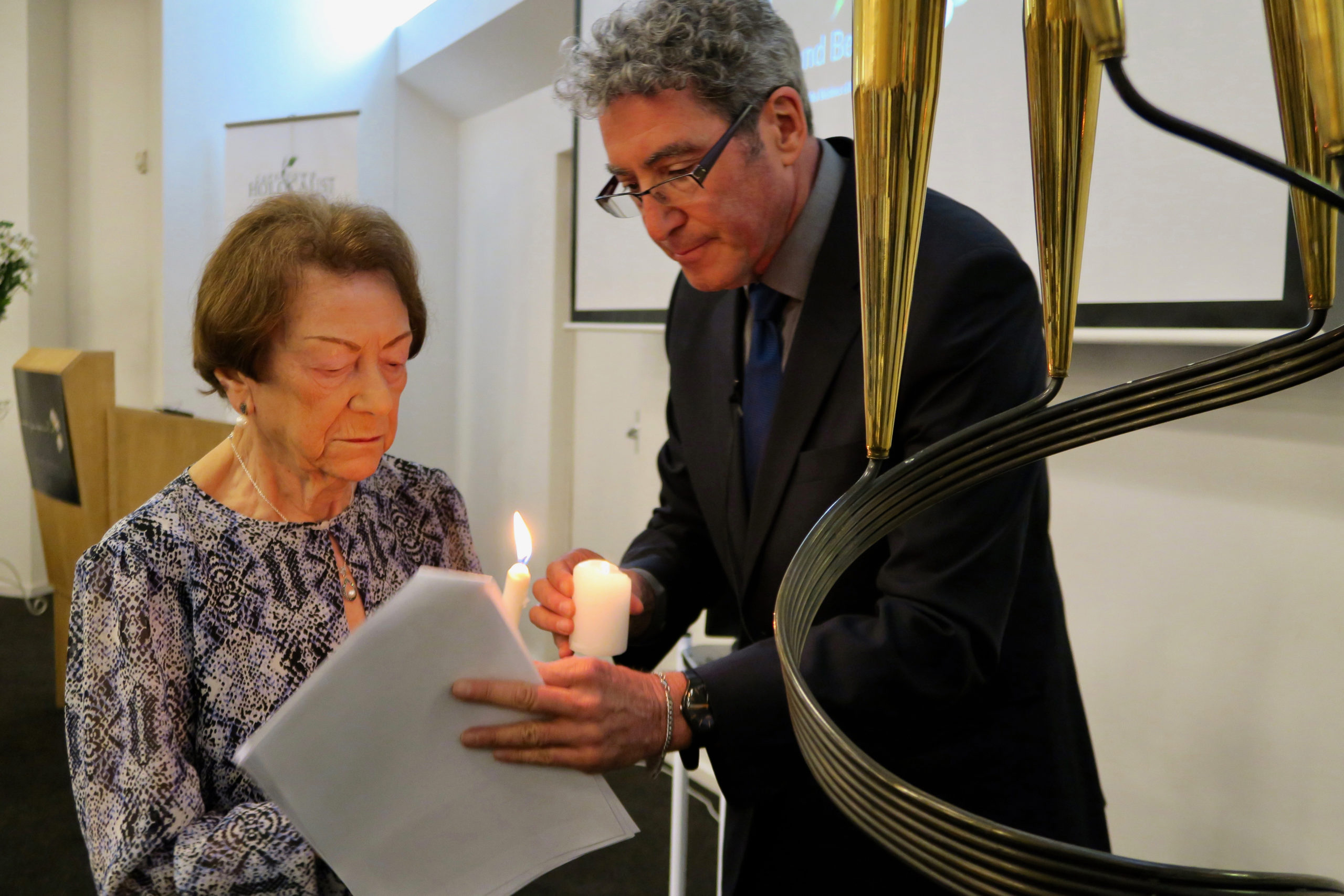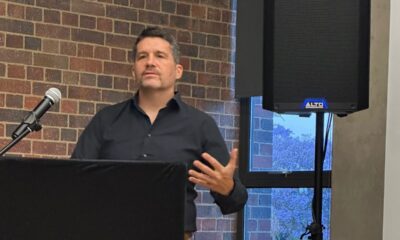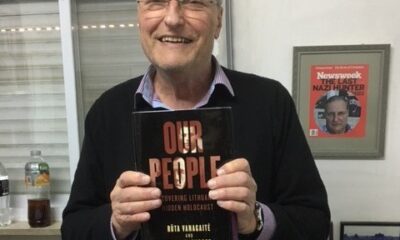
Tributes

From the depths of horror to a life of service
Polish-born Miriam (nee Teitelbaum) Lichterman would have been 100 in September had she not passed away on 18 July. With her long life, she graciously defied the Nazis who wanted to destroy all Jews.
She survived a horrifying childhood, facing the worst losses and devastation under the Nazis regime in the Warsaw Ghetto, then Majdanek, Auschwitz-Birkenau, and Ravensbrück concentration camps.
She lost her close-knit family, but survived, and went on to lead a life of service to the Cape Town Jewish community.
“Despite my experiences I was never bitter. I never sought revenge,” Lichterman, who was born in Warsaw in 1922, told people in her testimonies. “We were a very close, very warm family. There was my sister. She was the oldest, and there was my brother, four years younger, and I was the youngest. I recall a very happy life with my parents, with uncles and aunts, cousins, friends. I recall with much emotion how it was my teachers and my home environment that really moulded my character and made me the person that I am today. That allowed me to remain human when I found myself in later years in very inhuman circumstances.”
In fact, Lichterman was known for being kind and compassionate, a mother to all within her Sea Point community.
She was a young schoolgirl when World War II broke out in 1939. In November 1940, the Warsaw Ghetto was established. It was divided into two – the “large ghetto” and the “small ghetto” – so as to exclude an important thoroughfare, Chłodna Street, from its official boundary. Miriam and her family were forced to move into the small ghetto.
When she told her story to the thousands who wanted to hear it at the Cape Town Holocaust & Genocide Centre (CTHGC), she said that despite the hunger, cold, and deprivation they endured, she and her family tried to keep some semblance of a normal life in the ghetto.
In order to get bread and jam, she volunteered to be a machinist in a factory. However, any semblance of normality ceased when in July 1942, the Nazis began deporting Jews from Warsaw to the Treblinka killing centre.
Lichterman was finishing her night shift at the factory in the early hours of the morning in September 1942, when she and her fellow workers discovered they were locked in. When they were eventually released, she discovered that her parents had been deported to Treblinka. She never got a chance to say goodbye.
Her brother, Israel, managed to evade the deportations and get out of the ghetto to safety. He returned to tell her that he was one of the leaders of the planned Warsaw Ghetto uprising. He told her it was better to die fighting than to be murdered in a gas chamber. He died fighting in the April 1943 uprising.
Lichterman was then sent to Majdanek, where she was one of the few chosen to live. After just a few weeks, she was transferred to Auschwitz-Birkenau. “On arrival in Birkenau, I was shocked to discover that we were being tattooed with numbers on our arms. My number was 447332 – we had stopped being individuals, being humans – we became numbers.”
In January 1945, she joined thousands of Auschwitz prisoners on a death march through knee-deep snow to Ravensbrück concentration camp in Germany. The Nazis at Auschwitz had evacuated the camp to avoid the advancing Russian troops.
“Even today, so many years later, I wonder how I survived the death march because anybody who became so weak that they couldn’t walk anymore was just shot on sight by the guards,” she said.
Lichterman was taken to Malchow, a sub-camp of Ravensbrück. After some time, they were told they had to move again. However, on the day they were meant to leave, she recalled, “Suddenly a cry came from the girls who were right in the front. There was nobody guarding us. The guards with the dogs had disappeared. The commandant must have run away the day before. There wasn’t a uniform to be seen. We were liberated, we were free. We were not really free to go and do whatever we wanted, but we were alive, we were not destroyed, and we were free.”
She would tell people in her testimony, “While walking back after the war through devastated Germany, I met German refugees, elderly people, and small children. Their sons and their fathers were probably in the SS and guarding camps and committing all crimes against humanity, yet I could not say a nasty word to these people. I couldn’t do anything to them.”
As a free woman, she met Jacob Lichterman, the cantor of a prestigious shul in Warsaw that she had attended as a child.
They married and moved to South Africa in 1950.
She quickly learnt to appreciate the sense of belonging that the Cape Town Jewish community represented.
They went on to have two sons, who both also became cantors, and later gave them five grandchildren and seven great-grandchildren.
Jacob taught Barmitzvah boys at Vredehoek and later Schoonder Street shuls, and Miriam became second mother to many.
She also became the first mashgicha for the Beth Din, and established a kashrut department at the Mount Nelson Hotel, which became a favourite venue for Jewish weddings.
For many years, Lichterman didn’t speak of her war-time experience. But, once the CTHGC was opened in 1999, she slowly started to share her testimony. For more than 22 years, she continued to share her testimony with thousands of school children and adult groups at the centre.
She would tell them about the intrinsic necessity of living with hope, the ability to forgive, and the need for young people to resist all forms of injustice.
“Her unwavering support and generosity of spirit at the centre was amazing,” said Heather Blumenthal, CTHGC executive director. “Through her powerful presence, warmth, kindness, compassion, and love, people were naturally drawn to her, listening attentively, absorbing every word.
“Reading through the numerous letters of thanks and reflections which people have written to Miriam over the years, one sees a common thread – one of admiration, respect, and inspiration. She truly touched the hearts of so many people,” said Blumenthal.
“Miriam was a woman of resilience, tremendous courage, and faith. She was truly a lady, always beautifully groomed, quietly spoken, but with an indomitable spirit.”
Lichterman also joined Bnoth Zion WIZO (the Women’s International Zionist Organisation), and became a leading member of She’erith Hapletha (association of survivors). She played an important role in the Cape South African Board of Deputies Yom HaShoah Committee, and always participated in the annual ceremony.
“It was important for her to contribute to her community in a meaningful way. She was extremely kind, caring, and involved. She never missed an event at the CTHGC, or the Cape Town Jewish Seniors, and other organisations,” said Blumenthal.
Much of this information comes directly from the Johannesburg and Cape Town Holocaust & Genocide Centres. For more survivor stories, go to www.jhbholocaust.co.za/remembrance/online-publications/










